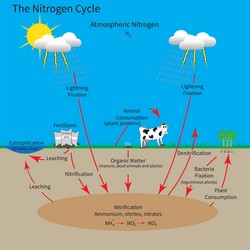Novel tools for investigating microbes involved in soil processes
Terrestrial carbon and nitrogen cycles are essential for Earth’s biosphere and intimately linked with microbial activity. The EU-funded project DW_FDTP_UVA (Understanding functional drivers in two terrestrial key processes- nitrogen fixation and cellulose degradation- by a single cell approach) has elucidated two microbial key processes - plant polymeric C degradation and nitrogen fixation. To identify the active participants of the two processes scientists combined methods of biogeochemistry, molecular biology, and single-cell technologies such as Raman microspectroscopy and high-resolution secondary ion mass spectrometry (NanoSIMS) for measuring the activity of single cells. However, these single cell techniques found limited application in soils presumably due to the dispersal of microbial cells in a large background of particles. Therefore, the scientists worked to develop methods applicable to soil microorganisms by separating the cells from soil particles and concentrating them for efficient analysis. The scientists investigated nitrogen fixation in forest and grassland soils as well as in the soil-plant interphase. Their work focused on these diazotrophs, as their diversity and contribution to the process of nitrogen fixation remains largely unknown. In order to identify the microorganisms with the genetic capability to fix nitrogen, researchers utilised the latest generation of sequencing technology and performed bioinformatics analysis of the functional genes for nitrogen fixation such as the dinitrogenase reductase gene. The use of the rare nitrogen-15 stable isotope offered a means to study their capacity to fix nitrogen. Researchers also investigated cellulose degradation and set out to identify the microorganisms that contribute to the process. For this purpose, they used cellulose labelled with the rare carbon-13 isotope in different nutrient conditions by varying the soil content in carbon and nitrogen. Results showed that nitrogen-amended microcosms exhibited the highest rates of cellulose degradation activity with a change in the cellulolytic community, including fungi as well as bacteria. This data supports the importance of nutrient availability in driving the activity of specific microorganisms in these important biogeochemical processes. Future work by the consortium will focus on the synergistic interaction and competition among different soil microorganisms. The battery of techniques and tools developed during the DW_FDTP_UVA project will help in this direction.







